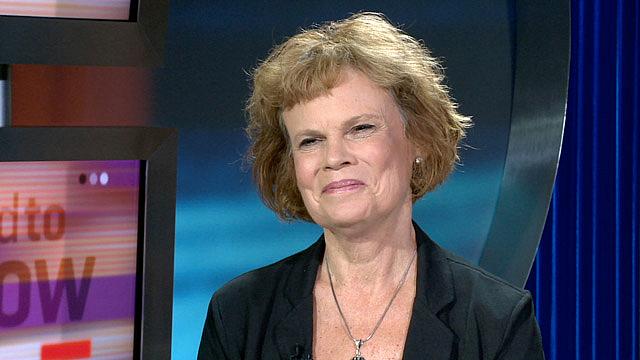Remembering Barbara Strauch: Five lessons from a health and science giant

Barbara Strauch. (Image via PBS.org)
Flying back from a vacation this week, I was saddened to see the news that Barbara Strauch had died. The New York Times science and health editor contributed immensely to our collective understanding of what it means to be healthy – body, mind, and a little bit of soul, too. There are a few tributes out there already, including her obituary by Sam Roberts at the Times and a piece by Joan Gralla in Newsday, where Strauch won a Pulitzer.
I had the privilege of having lunch with Strauch a few years ago, and I was struck by how, even at her level of accomplishment, she quickly put everyone at ease around her. She was warm, funny, self-deprecating, and insightful. Her leadership at The Times made the newspaper’s already outstanding health and science coverage even more engaging and multi-dimensional.
Here are five lessons that we can take from her life and her career.
1) Put health and science where they belong: top of mind. Strauch knew that the topics that are often relegated to a topic page or back section in a publication deserve much more of our attention. They are news, even if they aren’t as frightening as an unexplained plane crash or as titillating as a celebrity divorce. Strauch noted in 2014 that climate change coverage, for example, had appeared in the news section and on page one in stories about the California drought, renewable energy in Germany, and extreme heat in Australia.
2) Don’t be afraid to explain. Once a journalist masters a topic, it can be easy to use shorthand and jargon that will lose many readers. Strauch was always careful in her own writing and in the Times writing she oversaw to spell out both the “how” and the “why” of things. This is from her 2010 book, “The Secret Life of the Grown-up Brain”:
What's important about this study is that it's longitudinal, which means it studies the same people over time. For many years, researchers had information from only cross-sectional human life-span studies, which track different people across time looking for patterns. Most longitudinal studies, considered the gold standard for any scientific analysis, were not begun until the 1950s and are only now yielding solid information. And they show that we've been wildly misguided about our brains.
3) Be wary of false balance. When you have a role as influential as the health and science editor post at The New York Times, you need to think as carefully about what you don’t print as what you do. Strauch apparently kept tabs on how the paper was covering vaccines in general – not just in stories by her team of reporters – and she wanted to make sure that the paper did not create an impression of he said/she said false equivalence between the mountain of evidence behind the safety and efficacy of vaccines and the claims by a vocal minority that vaccines are the cause of autism and other disorders. She did something that I’m sure was politically unpopular. According to The Public Editor’s Journal by Margaret Sullivan, Strauch asked Denise Grady, one of the Times’ best health writers, to send a paragraph summarizing the science behind vaccines for inclusion in a story being put together by another team. Strauch told Sullivan, “Overall, I think our coverage has been fine. Perhaps we could have done the Q. and A. sooner. It is settled science, however, and we have written it many, many times.''
4) Find stories, even when you’re not looking for them. In 1999, Strauch and her family went on a vacation in Channel Islands National Park only to find out from a park ranger that the island had recently seen an explosion in mice suspected of carrying hantavirus. That experience became one of my favorite pieces of travel writing and I believe the only travel article Strauch ever wrote for the Times.
We put the food in a strong bag in the tent, as the ranger had advised, zipped the tent and lay back to go to sleep. Within minutes, we heard them. It was dark now and they were rustling in the leaves, first a few feet from the tent, then inches. Richard started making Alfred Hitchcock jokes; Hayley thought they sounded cute. I was horrified. I had to concede my own wishful thinking. Before coming, hearing about the mice, I thought they would be mostly in the fields, perhaps a few around campsites, numbers we could avoid. But they were everywhere. Soon the rest of the family fell asleep and it was only me listening. The mice were getting bolder, flinging themselves at the tent, then sliding down, making a terrible scratching sound. Deadly mice were using my tent as a ski slope. I felt ill: I was a bad mom.
5) Don’t forget to be grateful. When Strauch’s role expanded in 2011 to encompass the science team, she was as thoughtful as ever in how she explained her thinking in an article in The Observatory blog at the Columbia Journalism Review, by Curtis Brainard and Cristine Russell:
These people have been covering these topics for decades. I feel very lucky, actually. The Times is lucky. I’m not sure anybody in the country or the world has the same expertise. It’s a fabulous staff. For someone like me, you get to continue your graduate school education. There’s not one day where I haven’t learned something new in this department. I think that will continue.
To a life well lived and a person who left her audience well served, we will miss you Barbara.
Image via PBS.org.

